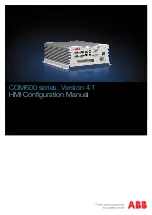
841
Glossary
source-routed IP packets
Packets with additional information in the header that specifies the route the packet should take.
This additional routing is specified by the source host, hence the name source-routed. Normal IP
packets have only source and destination addresses in their headers, leaving the actual route taken to
the routers in between the source and the destination.
spam
An unsolicited email message, mailing list posting, or newsgroup posting, often sent for advertising
purposes. Spamming, the act of disseminating spam, is considered to be bad netiquette because it can
tie up mail servers and networks and clog up recipient’s; mailboxes and is generally considered to be
an abuse of the underlying ethos of the Internet.
SPI (Security Parameter Index)
An Authentication Header (AH) SPI number between 1 and 65535 that you assign to each tunnel
endpoint when using AH in a VPN policy.
spoofing
The act of establishing a connection with a forged sender address. This normally involves exploiting
a trust relationship that exists between source and destination addresses or systems.
SRL (Secure Remote Login)
A type of login that lets a remote user log in to a security gateway to edit files, run utilities, and
perform other troubleshooting or debugging tasks that are not related to normal appliance
operations. All traffic is encrypted in an SRL connection.
SSH (Secure Shell)
A program that allows a user to log on to another computer securely over a network by using
encryption. SSH prevents third parties from intercepting or otherwise gaining access to information
sent over the network.
SSL (Secure Sockets Layer)
A protocol that allows mutual authentication between a client and server and the establishment of an
authenticated and encrypted connection, thus ensuring the secure transmission of information over
the Internet.
stateful
Of, or pertaining to, a computer or computer program that is designed to note and remember one or
more preceding events in a given sequence of interactions with a user, another computer or program,
a device, or other outside element. Stateful means that the computer or program keeps track of the
state of interaction, usually by setting values in a storage field designated for that purpose. Stateless
does not.
stateful inspection
The analysis of data within the lowest levels of the protocol stack and comparing the current session
to previous ones to detect suspicious activity. Unlike application-level gateways, stateful inspection
uses business rules defined by the user and therefore does not rely on predefined application
information. Stateful inspection also takes less processing power than application-level analysis.
Stateful inspection firewalls do not recognize specific applications and thus are unable to apply
different rules to different applications.
stateful packet filter
A type of filter that extracts bit patterns in the protocol headers of TCP and UDP connections, and
compares them to a table of established, open TCP and UDP connections to track open, valid
connections without having to process the rule set for each packet. Only the first packet of a
connection is approved; subsequent connection packets are recognized and allowed unchecked.
stateful packet inspection
An effective firewall technique based on the principles of packet inspection. However, whereas packet
filtering examines a single packet header, stateful packet inspection inspects a series of packets to
establish that a previous connection with the external computer has been made. If so, it will allow the
packet entry. If not, the firewall will deny access to the packet.
strong authentication system
A single-use authentication system that requires a different password for each session for each use.
Strong authentication systems are inherently more secure than weak ones because they are not as
vulnerable to password sniffing.
subnet address
A portion of an IP address that is used to poll all 254 nodes on a designated network for pcAnywhere
hosts. For example, an entry of 127.2.3.255 displays all pcAnywhere hosts with IP addresses
beginning with 127.2.3.
subnet entity
A subnet address including the subnet mask.
suffix
A code appended to the end of a telephone number for billing purposes, for example, a calling card
number.
Summary of Contents for Security 5600 Series, Security 5400 Series,Clientless VPN 4400 Series
Page 76: ...76 Managing administrative access Enabling SSH for command line access to the appliance...
Page 242: ...242 Defining your security environment Controlling full application inspection of traffic...
Page 243: ...243 Defining your security environment Controlling full application inspection of traffic...
Page 269: ...268 Limiting user access Authenticating using Out Of Band Authentication OOBA...
Page 373: ...372 Preventing attacks Enabling protection for logical network interfaces...
Page 509: ...508 Generating reports Upgrade reports...
Page 553: ...552 Advanced system settings Configuring advanced options...
Page 557: ...556 SSL server certificate management Installing a signed certificate...
Page 861: ...860 Index...
















































